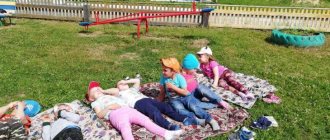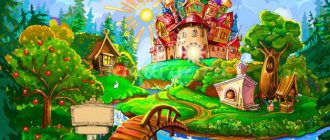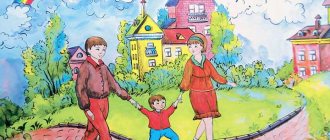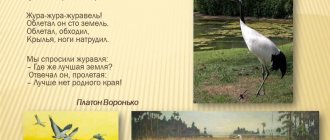Requirements for the calendar-thematic plan
Calendar-thematic plan is a plan that is drawn up for one of the academic disciplines (academic subject) and includes a list of topics, objectives for their study, the number of hours allocated to the topics, determination of the type of lesson, interdisciplinary connections, and methodological support. Working according to a calendar plan guarantees the implementation of programs and protects students from overload.
Requirements for the plan
Calendar and thematic planning is drawn up in printed form.
The title page must contain the following information:
Title of the document (calendar and thematic planning).
Name of the subject (must match the name in the curriculum).
Class.
Full name of the teacher.
Academic year.
"Approved: School Principal."
The name of the school in accordance with the Charter.
The teacher’s calendar and thematic planning is compiled in two copies (short and expanded).
A teacher’s brief calendar and thematic planning should contain the following columns:
Lesson number in order. Continuous numbering of lessons is used to show the correspondence of the number of hours of the curriculum used and the curriculum.
The name of the program section and the number of hours per section.
Contents (topic) of the lesson.
One topic can be designed for several lessons, which is indicated in the “Number of lessons” column. Upon completion of the topic, a control must be indicated. The names of practical and laboratory work must be indicated.
Number of hours.
Date (the planned date of the lesson, which must be entered at the time of submission of thematic planning). In the case of planning a block of lessons, the date of delivery is determined for each lesson. Necessary requirement: coincidence of the lesson dates according to the plan, the actual implementation and the entry in the class journal.
The teacher’s calendar and thematic planning must meet the following technical requirements:
A-4 format.
Font - Times New Roman.
The style of the main text is normal, the style of headings and section names is bold, the types of work are italic.
Size – 12, on the title page – no more than 18.
The interval is single.
Detailed calendar and thematic planning of the teacher must contain all the information of brief thematic planning and requirements for the level of training of students, which are formulated in an activity form (to know, to be able to).
Deadlines for drawing up and approval of calendar planning.
1. Calendar and thematic planning for each academic year is prepared in advance, before the start of the academic year.
2. Calendar and thematic planning is considered at a meeting of the subject methodological association, agreed with the deputy director of the school supervising the subject, and approved by the school director before the start of the school year.
3. A copy of the calendar and thematic planning is submitted to the deputy director in charge of the subject.
See document for all material.
Weekly calendar plan on the topic “School”
Topic: "School"
Monday.
Morning.
1. Conversation with children “What is school?” (give an idea about the school, remind children that September 1 is called “Knowledge Day”, why is it called that).
2. Didactic game “First-grader” (consolidate children’s knowledge of what educational supplies a first-grader needs and why, activate speech and clarify relevant concepts).
3. Outdoor game “We are funny guys” (develop dexterity, practice running loosely in a limited area)
4. Ind. Job. Fix the ordinal count.
5. Duty in a corner of nature. C. water the flowers, loosen the soil (draw the children’s attention to the signal drawings, offer to tell the rules for watering plants, explain why a lack and excess of water are equally undesirable). In the nature calendar, note the weather conditions.
GCD 1. Speech therapy
2. H.E.R. Modeling “ABC in pictures”.
Software tasks:
consolidate children’s understanding of the shape of printed letters; show. that letters can not only be written, but also sculpted (modeled) in different ways; propose to convey the configuration of familiar letters by plastic means (as planned); focus on finding different design options (for example, sculpt two letters as desired so that one of them is ordinary - simple, and the other - fantastic or patterned); develop imagination, thinking, general manual skill, fine motor skills; cultivate accuracy in work.
Vocabulary work:
capital, uppercase, lowercase.
Equipment and materials:
plasticine, stacks, napkins, boards, alphabet cards, cardboard cards for attaching molded letters; "The ABC in Pictures", a letter from Buratino
Methods and techniques:
surprise moment - letter, examination of a sample, reminder, observation, physical exercise "Pinocchio", individual advice, control, comparison, encouragement for self-analysis, encouragement, outcome.
3. H.E.R. Musical
Walk:
1. Excursion to school (introduce children to the school premises, some concepts of “lesson”, “recess”, make them want to go to school).
2. Conversation with children about the profession of “Teacher” (to form in children clear ideas about the work of adults, their activities in their profession).
3. Didactic game “When does this happen?” (repeat seasons)
4. Outdoor games: “The sea is agitated” (to develop imagination, the ability to express a planned image in movement) “Dashes” (to practice speed and dexterity)
5. Individual work - consolidate throwing the ball to each other from above (develop agility, speed)
2nd floor day
1. Compiling a story based on the painting “To School” (learn to compose a plot story based on the painting, using previously acquired plot-building skills, and independently invent events)
2. Reading the work of Z. Alexandrov “In the fall, Mishutka began to study.” Conversation about what you read. View the album “Schools of our city”
3. Learn the finger game “There is a tower in the field” (development of fine motor skills of the fingers)
4. Ind. The job is to repeat vowel sounds and practice writing them.
5. D/U “Keep an eye on your appearance” (form cultural and hygienic skills, teach timely and independent use of personal hygiene skills, help improve the quality of hygiene procedures)
Walk.
1. Observing the weather. (in the evening it gets cool and gets dark quickly). Goal: develop the ability to compare
2. P/i “Brave guys”. Goal: exercise fast running, develop agility
3. P/n “Pass silently.” Goal: use walking as a means of developing endurance
4. P/n “Call me.” Goal: develop the ability to create an image of an animal using facial expressions and gestures
Tuesday
Morning:
1. Conversation with children on the topic: “My sister (brother) is going to school” (to improve the ability to write a story, to develop speech). Look at the photos from the album “My Family”.
2. Learn the finger game “Orange” (development of fine motor skills of the fingers and hands). Didactic game “What’s missing?” (to develop children's attention, memory, visual perception, ability to notice objects).
3. Outdoor game “We won’t say what we saw, but we’ll show you what we did” (to develop children’s intelligence and observation skills)
4. Ind. work - repeat the names of geometric shapes.
GCD 1. Speech therapy
2. P.R. FEMP "Repetition"
Software tasks:
consolidate the ability to solve problems, develop the ability to select according to a model, transform geometric shapes according to given conditions, improve quantitative and ordinal calculations, consolidate the ability to divide a whole into parts, exercise orientation skills on a plane, on a sheet of paper in a square, in space, time representations.
Material:
numbers, task cards, notebooks, pencils, school supplies, coins, ball, circles and scissors.
Vocabulary work:
quarter, half, right, left.
Methodical techniques:
org. moment - “Name the parts of the week, day, year...”, compiling and solving problems, d/i “School goods store”, physical exercise, d/i “Transformation of figures”, dividing into parts of a circle, work in notebooks, summary.
3. F.R. Physical education No. 67
II
half.
day H.E.R. Drawing “My first letter” Program content:
consolidate children’s ability to draw large and neatly, teach children to create a decorative pattern from various elements, exercise children in selecting beautiful color combinations, develop children’s creative abilities, observation, sense of color, and independence.
Material:
album sheets, pencils, felt-tip pens, letter samples.
Vocabulary work:
monogram, monograph, capital.
Methodical techniques:
org. moment - S. Mikhalkov's counting rhyme "Fingers", the game "Call by name", highlighting the Capital letter of the name, showing samples, talking about spelling your name, physical exercise, independent and ind. work, result.
Walk:
1. The sun is a source of heat and light (form the idea that the Sun is a source of light and heat; develop the ability to think, reason, prove; cultivate a caring attitude towards nature).
2. Exercise for the development of fine motor skills of the hands “Lay it out yourself” (lay out the sun from stones)
3. Labor: help the children of the older group in cleaning the site (to cultivate hard work).
4. Outdoor game “Burners” (follow the rules of the game, develop dexterity, speed)
5. Ind. The job is to consolidate the skills of throwing objects at a distance, develop the eye and throwing power.
6. Research activity: where objects heat up faster in the sun or in the shade.
2nd floor day
1. Memorizing A. Maykov’s poem “The summer has flown by” (to develop coherent speech, its expressiveness, voluntary verbal memory)
2. A dramatization of the fairy tale “Forest School” (to interest children, to show that life at school is interesting even to animals). For independent activities, offer printed board games.
3. Ind. work - remember the names of the summer months, signs of summer.
4. Did. ex. “What objects are dangerous?” Goal: to fix the names of dangerous items at home and in the village
Walk:
1. Conversation “How to play on the site so as not to get hurt” Goal: lay the foundations for safe behavior, reinforce the rules of behavior on the site
2. P/i “Brave guys” Purpose: to practice fast running, develop agility
3. P/i “One or two.” Purpose: to introduce a new game; learn to walk clearly, with good coordination of movements
4. P/i “The sea is agitated” Goal: to develop endurance and imagination
Wednesday
Morning:
1. Conversation with children: “Why do you need to study at school” (to contribute to the formation of the student’s position).
2. Learning with children the dramatization “Dolls learn letters together” (introduce children to the dramatization, make them want to show the children of the older group how they are preparing to enter school).
3. Didactic game “Correct the mistake” (to develop attention, thinking, teach to see a mistake)
4. Outdoor game “Freeze” (learn to understand schematic images of human poses)
5. Didactic game “Go through the labyrinth” (development of fine motor skills)
6. Staying on duty in a corner of nature, wiping plant leaves from dust (developing a value attitude towards work)
GCD 1. Speech therapy
2. S.K.R. Life safety "Dangers in everyday life."
Program content:
discuss with children dangerous situations that may arise when playing in the yard, in the kindergarten area, at home, repeat with students the basic rules of safe behavior on the street, at home; develop the ability to see danger in everyday life and the ability to prevent it; give an idea of the negative consequences for life and health due to ignorance or non-compliance with safety rules; develop logical thinking and observation skills; cultivate responsible behavior in everyday life, caution, and the ability to be responsible for one’s actions.
Equipment:
pictures depicting dangerous situations, cards with objects, illustrations of rescue services with numbers.
Vocabulary work:
safety, abrasion, bruise, poison.
Methodical techniques
: org. moment - d/i “Good-bad”, conversation with children about safety, teacher’s story about dangerous situations in everyday life, development of rules of safe behavior, playing out situations, physical training, d/i “4 extra”, reminder of emergency services phone numbers, result.
3. H.E.R. Musical
Walk:
1. Observing schoolchildren walking by. What clothes are they wearing, what are they holding in their hands, in what mood are they going to school (to develop cognitive activity in the process of forming ideas about schoolchildren)
2. Labor: transplanting seedlings. Goal: develop hard work.
3. Didactic game “School supplies”. Review the rules of behavior during games.
4. Outdoor games “Bees and bear cubs”, “Ball for the driver” (practice in climbing the gymnastic ladder in alternating steps, in throwing and catching the ball)
5. Ind. work - practice running at a slow pace (develop agility, endurance, proper breathing)
6. Observation: weather. Establish cause-and-effect relationships.
2nd floor day
1. Reading the work of V. Berestov “Who learned what?” Conversation about what you read.
2. Role-playing game “School” (to cultivate the desire to accept the position of a schoolchild - student, to be able to subordinate one’s desires to collective ones).
3. Offer children Dienesh blocks (to develop logical thinking and imagination)
4. Outdoor game “Colors” (fix different shades of the same color)
5. Didactic game “School supplies” (to consolidate the idea of school supplies).
6. Work in the book corner on gluing up torn books (to instill in children a caring attitude towards books)
Walk
1. Observing the weather using comparison. Look at the sky and compare it with the sky on a walk during the day. Determine if there is wind. Warm or cool in the evening. What is this connected with? Goal: Mastery of knowledge to determine weather conditions
2. P/n “Catch a couple.” Goal: develop running speed, the ability to quickly find a pair
3. P/i “Empty space”. Goal: develop reaction, running speed, ability to dodge
4. P/i “Ivashka”. Goal: to develop endurance, the ability to guess the child with closed eyes, memory
Thursday
Morning:
1. Conversation with children on the topic “History of school uniforms” (summarize the presentation on the topic)
2. Didactic game “Say the opposite” (to develop children’s speech)
3. Ind. work - practice writing numbers from 1 to 10 (develop basic mathematical concepts)
4. In the nature calendar, note the weather conditions.
5. In a corner of nature, water the flowers (cultivate love and care for flowers, develop the ability to determine the plant’s need for watering).
GCD 1. Speech therapy
2. P.R. FEMP “Orientation on a sheet of paper”
Software tasks:
improve the ability to compose mathematical expressions with the greater than, less than sign, introduce the projections of geometric shapes, improve the skills of orientation on a sheet of paper, time representations. to form a positive attitude towards educational activities, to develop skills of independence, activity and initiative.
Material:
numbers, mathematical signs, “Days of the Week” clock, cone, cube, pyramid, parallelogram, notebooks, pencils, ball.
Vocabulary work:
parallelogram, cone, pyramid, projection.
Methodical techniques:
org. moment - “Say the opposite”, comparing numbers, examining shapes and their projections, d/i “Days of the week”, physical exercise, work in a notebook, summary.
3. H.E.R. Drawing "First day of school"
Program content:
consolidate the ability to independently choose a subject, convey your feelings and experiences in a drawing, using any drawing technique, learn to convey the poses and movements of people, develop children's creative abilities, fantasy, imagination, and sense of composition.
Material:
pictures and illustrations on the theme of school, album sheets, gouache, watercolors, colored pencils, wax crayons, etc., brushes, jars of water, palettes, rags.
Vocabulary work:
desk, student, textbook, classroom, teacher's room.
Methodical techniques:
org. moment - reading A. Barto's poem "Mom or Me", conversation about school, looking at pictures about school, children's stories about school, reminder of drawing techniques, showing drawing of a person sitting at a desk, physical exercise, independent work, ind. teacher's help, result.
Physical education in games on a walk No. 35
Walk:
1. Observation of seasonal changes (form concepts about the changing seasons, clarify ideas about the features of each season).
2. Didactic game “Tender words” (form nouns using diminutive suffixes)
3. Labor: cleaning the area from fallen leaves. Goal: to create a joyful mood from the work done.
4. Outdoor games “Traps”, “Blind Man’s Bluff” (exercise fast running, develop dexterity)
5. Ind. The job is to consolidate the ability to throw the ball up and catch it with both hands.
6. Research activity: find the tree that was covered with leaves first. C. Introduce the first characteristic features of trees.
2nd floor day
1. Reading the work of L. N. Tolstoy “Filippok”. Conversation about what you read, introduce a new work.
2. Didactic game “Who left?” (develop attention, visual memory)
3. Ind. work - repeat home address, first name, patronymic of parents
4. Making attributes for the role-playing game “School” (explain to the children why this is needed, make them want to play school)
Walk:
1. Conversation about school. Talk about the customs and folk signs characteristic of the school. Purpose: to introduce folk signs and customs.
2. P/i “Deer Catching”. Goal: to develop accuracy, throwing power, evasiveness
3. P/i “Game with a rope”. Goal: develop dexterity
4. P/i "Rucheek". Goal: teach to follow the rules of the game, develop attention
Friday
Morning:
1. Conversation with children “How is school different from kindergarten” (create positive impressions of the school)
2. Examination of the illustrations “Modern school”, “What schools were there before”.
3. Creating a situation “Mathematics lesson at school” (to help children realize the seriousness of learning)
4. Outdoor game “Listen carefully” (to develop attention, memory, generalize motor experience, form a motor culture).
5. Ind. work - practice cutting a circle from a square by smoothly cutting off the corners (repeat safety precautions when working with scissors)
6. Dining duty, repeat the table setting rules.
GCD 1. Speech therapy
2. P.R. FCCM “School. School supplies"
Software tasks:
give children knowledge about school and school supplies, summarize children’s existing knowledge, clarify children’s knowledge about school, consolidate the names and purposes of school supplies; form plural nouns, nouns with diminutive suffixes; teach children to compose a story based on a picture, develop children’s skills in coherent conversational speech, teach them to answer the teacher’s questions coherently and logically, develop vocabulary and thinking through solving riddles, develop interest in school and a desire to learn, and cultivate a caring attitude towards school supplies.
Material:
subject and subject pictures, a set of school supplies: briefcase, notebooks, textbooks, pen, pencil case, paints, pencils.
Vocabulary work:
first grader, schoolboy, teacher.
Methodical techniques:
org. moment “Time of year, month, day of the week”, game “Odd Four”, reading an excerpt from the poem “Important Day” by Sergei Mikhalkov, game “Shop”, riddles about school supplies, letter from Dunno, writing a story about school, physical exercise, game “One is many”, “Call me affectionately”, the result.
3. H.E.R./P.R. Construction of a “First-grader’s briefcase”
Software tasks:
to form creative abilities in children of senior preschool age, to generalize ideas about school supplies, to consolidate the skills and abilities to create crafts using the origami technique using the basic form, to create conditions for the development of creative imagination, memory, attention, self-confidence, constructive thinking, to cultivate a respectful attitude towards work, the desire to do work carefully, and to complete the work started.
Materials:
2 squares 14 x 14 of different colors for each child, brushes, glue, oilcloth, album sheet, colored paper, napkins, a photo of the child for each, laptop or interactive board for displaying a presentation, “Origamchik” - a paper square made of cardboard, a wonderful box, school accessories: notebook, pencil, pen, ruler.
Vocabulary work:
stationery, briefcase, satchel.
Methodical techniques:
surprise moment - the appearance of the “Origamchik”, d/i “Find out by touch”, viewing of the presentation, physical exercise, reminder of the rules of origami, step-by-step demonstration of the method of action, independent and ind. work, result.
II
F.R.
Physical education No. 68 Walk:
1. Observing the beauty of the grass area of the site. Note that the grass is green, there are many flowers. Goal: to cultivate love and respect for the nature of the native land, to see beauty in the ordinary
2. Labor: in the sandbox. Develop work skills.
3. Didactic game “Name another type of transport” (fix the names of transport)
4. Outdoor game “Don’t get your feet wet” (to develop coordination of movements; teach to perform motor tasks, develop a desire to achieve a goal)
5. Ind. work - practice climbing on a bench (repeat the rules and techniques, develop flexibility, ingenuity, speed).
6. Review the rules of the road, teach how to cross the street correctly.
2nd floor day
1. Conversation: “If I were a wizard” (fantasies on the topic - the school of the future)
2. Reading fiction “Proverbs and sayings about learning” Purpose: to show children the cognitive, moral and aesthetic value of proverbs; teach them to use proverbs in speech
3. Role-playing game “Construction”: plot “School in a new area of the city” (to develop sociocultural skills)
4. Didactic game “What should students be like?” (develop speech, thinking)
5. Ind. work - practice determining the sizes of objects from the smallest to the largest, denoting with numbers from 1 to 10 (development of mathematical concepts)
Walk:
1. Conversation “Living and inanimate nature” Purpose: to clarify children’s ideas about the signs of living things; develop the ability to compare living and inanimate objects
2. P/i “Hunter and Ducks”. Goal: develop accuracy, evasiveness
3. P/n “Catch whoever they call.” Goal: to consolidate the ability to throw a ball up and catch it with both hands
4. M p/i “Flies - does not fly.” Goal: to develop attention and endurance.



